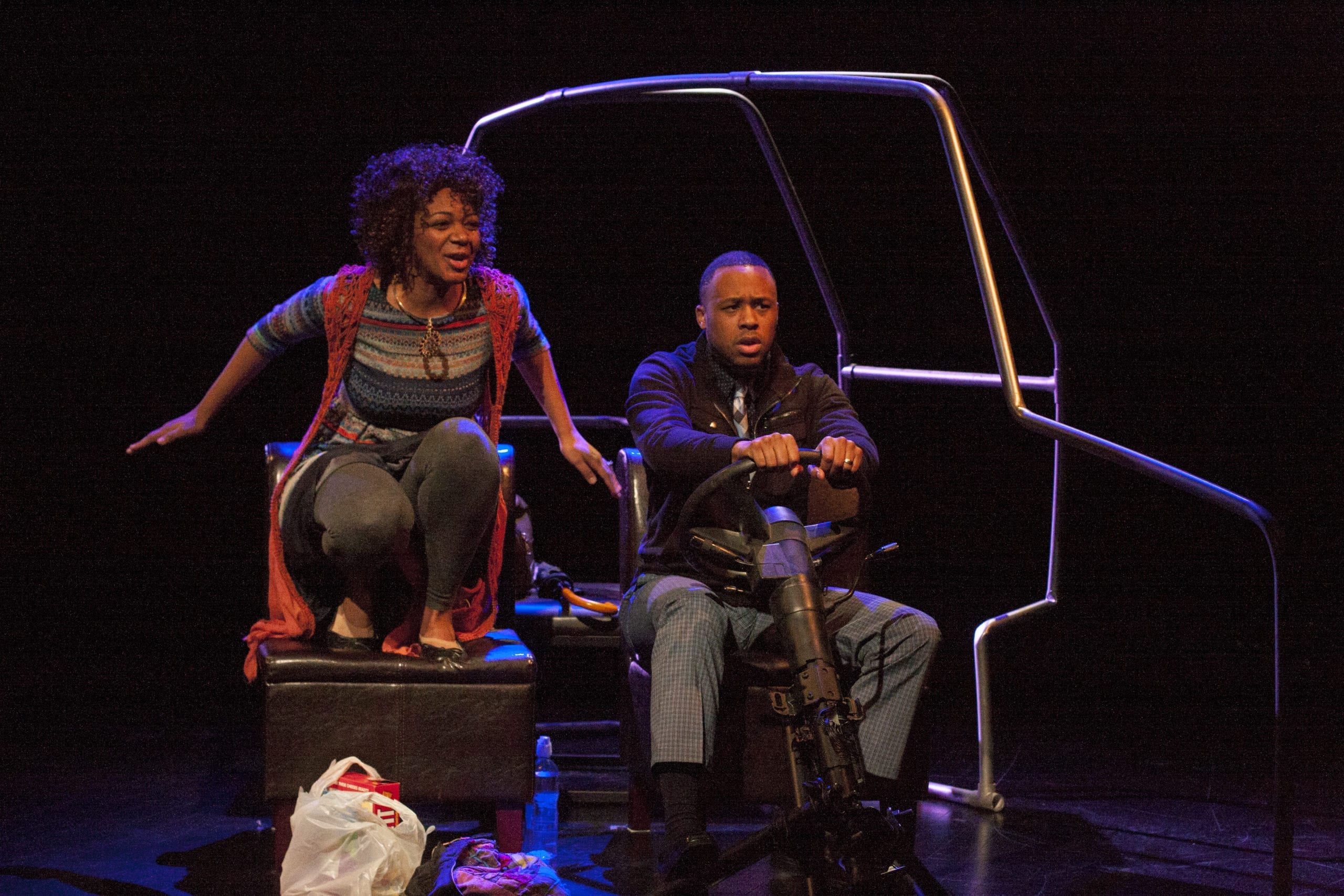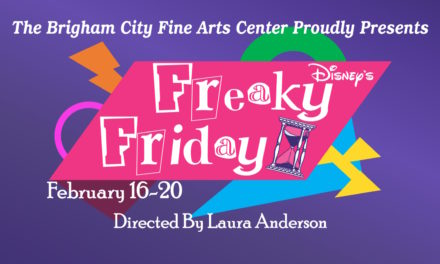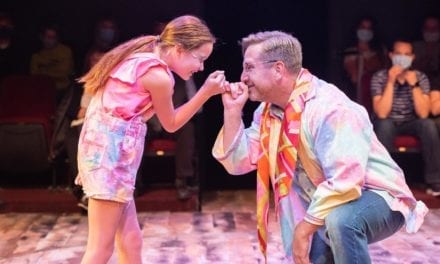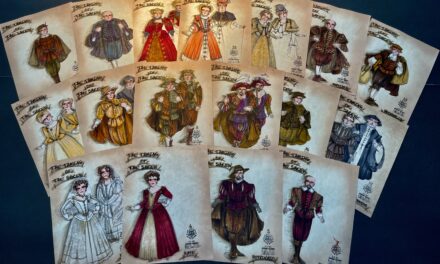SALT LAKE CITY — A/Version of Events is bold, fearless, exciting . . . and you should probably go see it. Playwright Matthew Ivan Bennett takes his audience on a road trip, a trip that is about so much more than just getting somewhere. Cooper and Hannah have hit the road to leave the past behind, both figuratively, and literally, while finally realizing that the past is always present, and cannot be outrun.
The play opens with the lights coming down on a simple, yet powerful, outline of a car, designed by set designer Randy Rasmussen. The partial frame of the car, the seats, and the wheel, all signify travel, journey, destination; it’s a structure and narrative that seems somewhat familiar. But just as the set only points to reality, the dialogue and structure of this piece cleverly implies the real, while weaving in moments of magic, memories, threads of emotion, and strands of fear.
Carleton Bluford (as Cooper), and Latoya Rhodes (as Hannah), open by singing along to the music. Throughout this play, sound designer Cheryl Ann Cluff uses music to carry the characters into memory and out of contentious moments. Like a band-aid on a wound, director Christy Summerhays uses songs to help the characters heal themselves. At one point during the “drive,” Cooper gets out of the car while singing songs from Willy Wonka and the Chocolate Factory, giving the dialogue time to breath and saturate, in lovely moments of transportation.
Cooper and Hannah drive out of New York, away from ground zero, 9/11, and the chilling attack that lingers in the subconscious of this generation. The characters massage different angles and ideas of this event, discussing 9/11 in lieu of their own, more personal and wrenching tragedy. Rhodes handles the dialogue in this play with such open and honest manner that it is a delight to watch. She jumps excitedly in her chair while playing a game, sings out passionately, and drops everything while fighting for herself, her feelings, and her grief. Standing in the middle of the road, Hannah yells out to God in a moment of reckoning, playing on the edge of life or death.

Carleton Bluford
Bluford brings a depth, and earthy quality to Cooper. He carries his grief in the way that he walks, and the character holds the past in the weight of his movements. There is a lovely moment where he holds his child in memory, walks with the child, and hums to him. Bluford brings so many levels to his character, and these levels unfold throughout the play in ways that are lovely to see. Cooper deals with loss by holding to faith, in a sincere and hopeful way. Hannah and Cooper’s marriage is the central concern of this play, and they hold to it and fight for it through games, through music, and ultimately, by battling it out in fairly vicious style.
At the WAWA—the east coast’s version of a 7-Eleven, Hannah realizes that she has lost one of her earrings, an earring of sentimental value, and gets upset. While she is in the store Cooper calls his mother and leaves a voice mail, revealing that there is an upset darker than a lost earring percolating in the periphery of their relationship. As they continue to drive through Pennsylvania Hannah wants only to get to the “chocolate city.” It is there that Hannah pins all of her hopes, wanting to get there so that she can almost revert back to how she was as a child—wanting nothing but the simplicity of wanting, and chocolate. These references to Hershey’s Chocolate World are reminiscent again of Charlie and the Chocolate Factory, of the innocence and simplicity of wanting to be taken out of this world, and into a world made of chocolate. While Cooper goes along on this journey and placates Hannah, he wants New York, complexity, 9/11, and the truth.

Latoya Rhodes
The directing of this play is simple and profound. There isn’t a heavy concept that gets in the way of the beautiful and poignant dialogue and acting, but rather pointers that signified the imagery and themes of this work. The set designates constrictions of place, while allowing the actors to slip in and out of time. The lighting, designed by Jesse Portillo, works well to establish a sense of place. Finally costume designer Phillip R. Lowe dresses both Cooper and Hannah to represent their inner states.
Even though both Cooper and Hannah’s version of events are different, and messy, and complex, there versions come to be respected by the other. Just as the event of 9/11 is varying, and messy, and hard to sift through and process, so are the events, and truths of Cooper and Hannah. Furthermore, without giving too much away, this is a play that is not only important, but enjoyable, and worth the ride.






